|
|
THE LARCHES
Tamarack, European Larch
Family Pinaceae
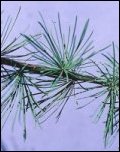 Larches are graceful, delicate-looking trees with species that occur around the
world. There are two species in the United States with one native to the U.P.
Larches lose their NEEDLES in the Fall, unlike all conifers. They are generally
rapid-growing species and can invade new areas fairly readily, if given full
sunlight. Mostly a family of the northern hemisphere, the
Pinaceae have 9 genera and about 210
species. The genus Larix is shown on this page. Other U.P.
genera are Pinus (pines),
Picea (tamarack),
Tsuga (hemlock), and
Abies (firs).
Larches are graceful, delicate-looking trees with species that occur around the
world. There are two species in the United States with one native to the U.P.
Larches lose their NEEDLES in the Fall, unlike all conifers. They are generally
rapid-growing species and can invade new areas fairly readily, if given full
sunlight. Mostly a family of the northern hemisphere, the
Pinaceae have 9 genera and about 210
species. The genus Larix is shown on this page. Other U.P.
genera are Pinus (pines),
Picea (tamarack),
Tsuga (hemlock), and
Abies (firs).
 TAMARACK
(Larix laricina)
TAMARACK
(Larix laricina)
Other
Names: Eastern Larch, American Larch, Hackmatack
Key ID Features: Needle Clusters, Cones, Habitat, Fall Color
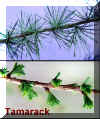


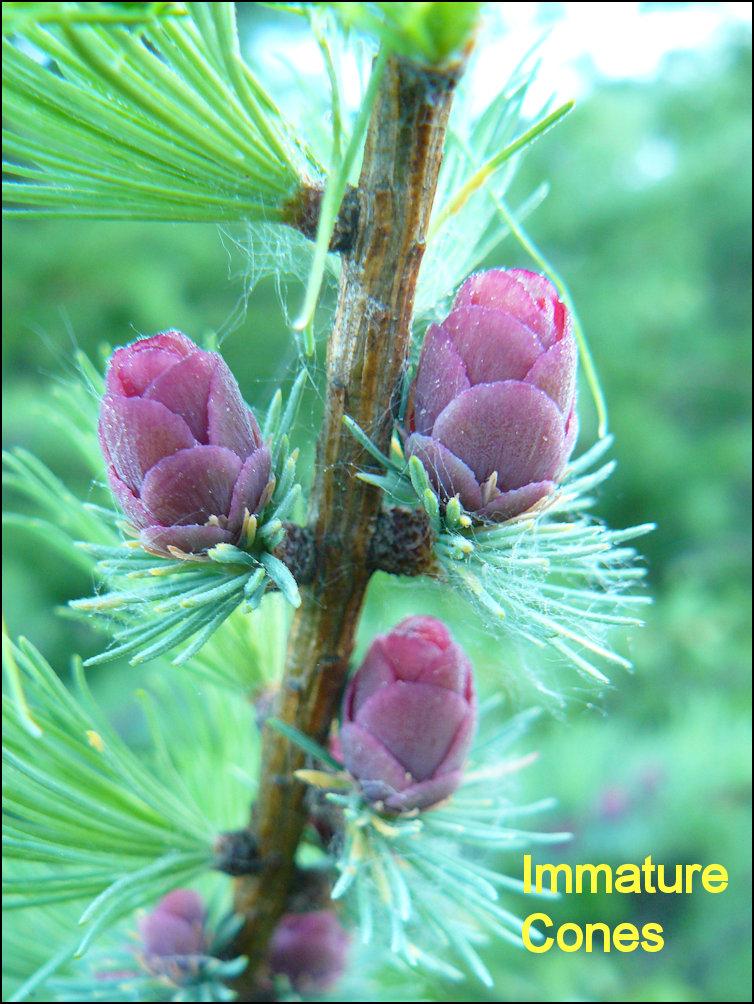
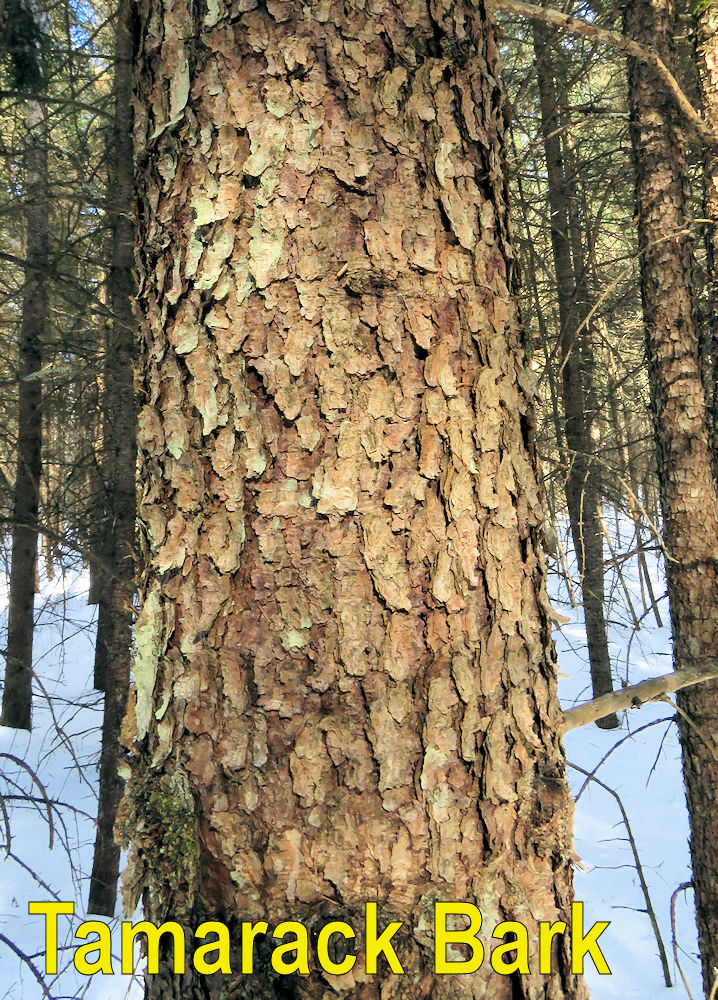
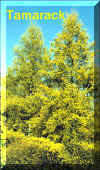
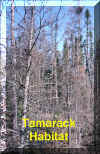
Tamarack is unique among native U.P. conifers
in that is loses all the NEEDLES each fall in a blaze of gold. Up to a couple dozen
needles grow in clusters from the end of small SPUR BRANCHES along the twigs. The
needles are about an inch long and are very soft. The CONES are small and roundish,
about a half-inch in size. The BARK is dark gray and flaky, similar to black
spruce. Tamarack forms a very straight and tall TRUNK with little taper. The
wood is somewhat rot-resistant and is very hard. Either in pure stands or often
associated with black spruce, tamarack generally can be found in WETLANDS, but actually is
a very rapid grower on upland sites. Common pests: larch casebearer, dwarf mistletoe, porcupines.
EUROPEAN
LARCH (Larix decidua)
Other Names: None Known
Key ID Features: Needle Clusters, Cones, Habitat, Fall Color
Very similar to tamarack, European larch also loses its NEEDLES in the Fall. Larch is found more often on upland sites, rather than in wetlands, will grow faster, and to a larger size. Most of the larch in the U.P. is grown in plantations for pulpwood fiber. The CONES are about one inch long, larger than tamarack. Common pests: larch casebearer, dwarf mistletoe, porcupines.
Click HERE
to return to the Conifer Key.
Click HERE to return to the home page.
A note about the images on this website, click here.
This site created and maintained by Bill Cook, MSU Extension Forester for the Upper Peninsula of Michigan. Editing and modification is ongoing. Submit suggestions, questions, and corrections to cookwi@msu.edu or call 906-786-1575.